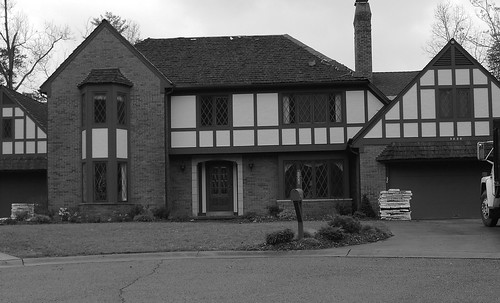
One of the first things I was warned when I traveled in Africa on behalf of the U.S. State Dept. in the 1970s was “Don’t drink the water.” When I moved to Portsmouth in 1989, which in some respects resembled a third world country, one of the first warnings I got was “Don’t trust the doctors.” Most of the doctors were associated with the Southern Ohio Medical Center, or SOMC. I didn’t take that warning seriously enough and I paid the price, as so many others I have known or heard about did. While there were many dedicated and talented people working at the hospital, for too many patients SOMC came to stand for Southern Ohio Malpractice Chopshop. The problem was not with the employees as much as it was the systemic cronyism, incompetence, and corruption among the over-privileged at the top.
At a dead-end on Fourth Street, in Portsmouth, we had Ted Journey practicing his chop-shop trade; on the Hilltop, where SOMC is located, we had Dr. Richard C. Rooney practicing his. According to the Shawnee Sentinel, Rooney still has ties to SOMC.
Thoracic surgeon Rooney was one of the doctors who gave SOMC a bad name. Back in 2000, I had heard that Rooney was in difficulties at SOMC. After being charged in a number of malpractice suits (see Rooney’s rap sheet, below) he had moved out of Portsmouth. That meant his house on Camelot Drive was empty. Selling a house in Portsmouth under any circumstances is not easy. In legal difficulties and having had to move out of town, Rooney was not in a good bargaining position when it came to selling his Camelot Drive house. If this was any place other than Portsmouth, he would probably have had to take a loss. But this is not any place; this is Portsmouth, and whenever the over-privileged and well-connected have property they need to unload, and when a private buyer cannot be found, public monies can be found. In Portsmouth’s lexicon, “marting” means “to purchase, at inflated prices, with public monies, white elephant properties from the politically well connected.” In this case, a malpracticing doctor, a member of the over-privileged class, needed some help from his over-privileged peers.

Former Rooney house on Camelot
Rooney’s case was not unlike that of Clive Veri, president of Shawnee State University. Rumors of legal problems and harassment suits were swirling around Veri when he resigned as president in 1998. He had become an embarrassment at SSU., where an overwhelming majority of the faculty had more than once voted no confidence in him. In one poll he got only 5% of the faculty to support him. SSU was near the bottom in US News annual college rankings. But the worse things got at SSU, the more the university trustees loved the malpracticing president. A piece I wrote in 1998 for the Shawnee Sentinel, in its pre-Internet, pre-cyberspace days, analyzed the sweetheart golden-parachute retirement package the trustees provided to the departing president.
Like Veri, Rooney was rescued by the SSU trustees. For over a year, I served as the faculty representative on a presidential housing a committee, of which SSU trustee George Clayton was chairman. We had been making plans to build a new house for the university president on the campus. The architect had been hired, the plans drawn up, and the ground all but broken. The architect had been encouraged by the committee to be innovative, and he had succeeded. The house would have been an architectural landmark. But at the twelfth hour, George Clayton picked a quarrel with the young architect. I can think of no better way to describe it. I was flabbergasted. The architect was stunned. What was going on?

The house that Clayton killed
The next thing the committee knew, the project was canceled. Instead of building a state-of-the-art president’s house on campus, as had been planned, Clayton, acting for the trustees, decided instead to buy Dr. Rooney’s house on Camelot Drive. Rooney’s house had nothing to recommend it as a president’s house. The Camelot house was far from campus, was in need of extensive and costly redecoration and repairs, and was without adequate parking. Among other problems, it was slipping off the hill it was on. A retaining wall had to be reinforced. But the house was owned by one of the privileged elite and that was enough to recommend it. Why waste public funds on something new when something old (and empty) weighed heavily on the hands of one of the over-privileged?
George Clayton “negotiated” the outrageous price of $412,000 for Rooney’s house. What did Clayton care? It was taxpayers’ money, not his own that he was squandering. The Camelot house has since proved to be a money pit. If ever a SSU trustee deserved to be sued for malpractice, Clayton did.
In addition to having been on the board of trustees at the university, Clayton had also been on the board of directors at the hospital. There were few pork pies in Portsmouth he did not have his finger in. When his own business failed, he was stuck with an empty department store. He knew what to do. With Representative Rob Portman’s help (“It’s a bird! It’s a plane! No, it’s Porkman!”), Clayton unloaded his empty unsellable empty department store on the public. Millions of public dollars, much of it in the form of pork from the U.S. Dept. of Agriculture, have gone into buying and converting Clayton’s Kenrick’s department store into a Welcome Center.

Just say no to Marting's
Another empty department store, Marting’s, was also earmarked for conversion into a public building, at great public expense. But the voters refused to be hornswoggled, for Marting’s was the scam that broke the taxpayers’ back. In 2004, voters recalled a crooked mayor and two crooked council women because of their roles in the Marting scam, and just last week, in the May 2nd primary, the voters again rejected the Marting’s referendum. Marting’s is the scam that will never be depicted on the floodwall murals, but it is the scam that brought the Concerned Citizens into being, and for that all who want good government should be thankful.
The monopoly on news in Portsmouth has been broken. There was a time when an insert in the Portsmouth Daily Times and the Community Common was enough to influence voters to support the over-privileged. A closed open forum and a farcical open house at Marting’s was at one time all it would have taken. But inserts in support of the Marting scam were not enough in 2004 and they were not enough in 2006.
The defeat of the Marting scam in the May 2nd primary was not the only victory for good government. Just as patients can sue malpracticing physicians, voters can still recall malpracticing politicians. The attempt to restrict the voters’ right to recall incompetent and corrupt officials was soundly defeated. We are not about to let the city solicitor decide which malpracticing politician is recallable. Not in a Kuhn’s age.
Rooney’s Rap Sheet
